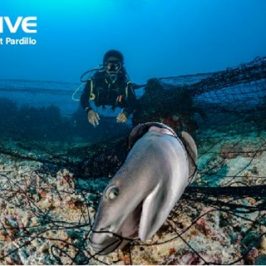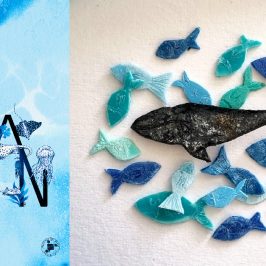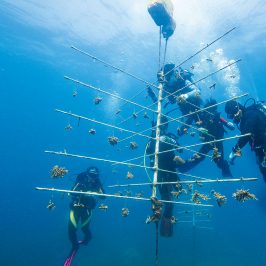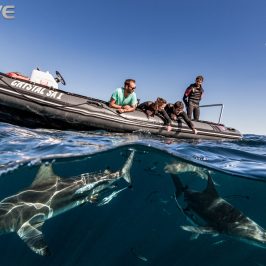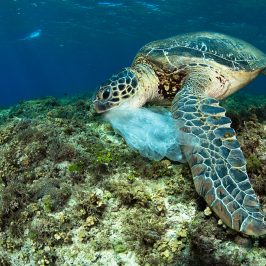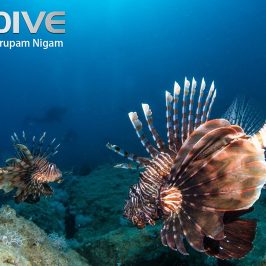In the Tropical Eastern Pacific of Costa Rica, coral reefs have been affected by unsustainable fishing practises, invasive species, sedimentation from rivers and runoff from agriculture and human populations. The CORAL REEF RESTORATION PROJECT, held by Marine Conservation Costa Rica, is fighting the battle to keep local reef systems healthy.
Text | AnnaLove
Photo | Marine Conservation Costa Rica
Just above the equator on the isthmus of Panama, lies Costa Rica, a small country overflowing with natural wonders. On its Pacific coast, where the rainforest meets the ocean, is Manuel Antonio. Here, howler monkeys greet you from the treetops while macaws shout their welcome calls from high above. Along the beaches, Olive Ridley turtles find places to nest and humpback whales give birth to their young in the warm waters.

Underneath the water, this richness is only enhanced. Whitetip reef sharks, octopus, colourful reef fish and nudibranchs call these marine-protected waters their home. And, at the base of the ecosystem, live the organisms that facilitate the ocean’s biodiversity – coral.
Making up 1% of the ocean’s floor, yet accountable for 25% of ocean biodiversity, coral reefs are the glue that binds together ecosystems, and not just those underwater. They also help drive the fishing and tourism industries, providing the communities on land with a means to survive. Corals also act as excellent storm barriers by absorbing wave energy from directly impacting their coastal neighbours. Despite their functionality, corals are extremely sensitive and struggle to cope with our changing environment. In the past 30 years alone, Costa Rica has lost 70% of its coral reefs. Rising sea levels, ocean acidification, chemical runoff, invasive species and reckless overfishing are just some of the major factors opposing coral reefs.
It’s for this reason that Katharine Evans and Georgia King founded the non-profit Marine Conservation Costa Rica (MCCR). These two British biologists met in foreign waters and bonded over scuba diving and similar passions for the environment. As their friendship grew so did the ideas for community outreach projects like beach clean-ups and trash pickups. In 2019, they organized a coral restoration pilot study and MCCR’s journey began. At its core, the non-profit is designed to advocate for a healthier ocean through education and action.
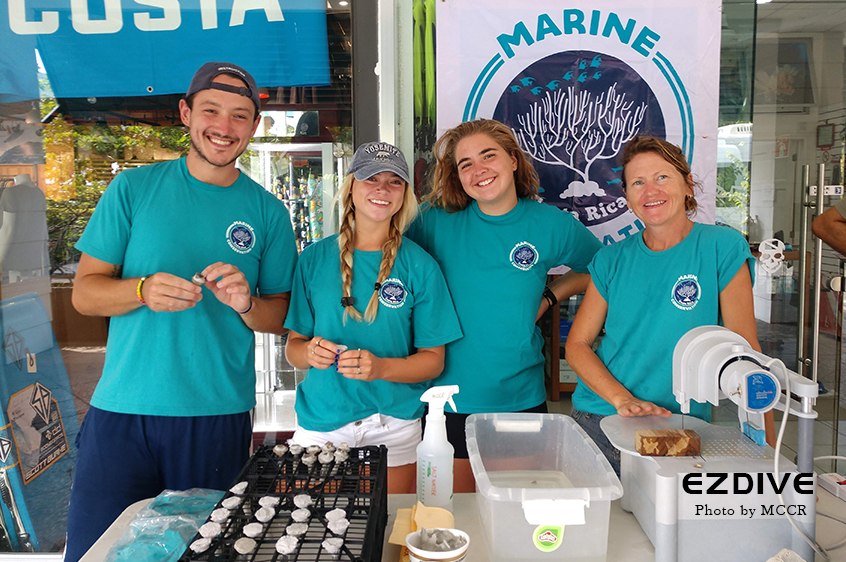
As a biologist and coral practitioner, Kat understands and explains the science of underwater coral farming. The key to success is to have diverse and healthy specimens with genetically variant genotypes. Kat and her team practice a three-step process: Recovery, Growth, Outplanting. To refrain from disrupting the delicate reef ecosystem, Kat prefers finding corals of opportunity. These are corals that have naturally broken off the reef and would not survive on their own. Once the healthy pieces are collected, phase two commences. Here, the corals are fragmented into small pieces with precision and care using a diamond blade band saw and are grown on individual plugs. Fragmentation is an important part of the process as it stimulates faster growth, using the corals’ own biology. Young, small corals grow faster than older, larger colonies. Additionally, fragmenting the coral creates a healing response. Kat explains that it’s similar to when we get a cut on our finger and our body puts in extra effort and energy to regrow our skin; corals have a similar process.

Once the fragments are prepared they are transported to one of the nurseries. The maintenance of these nurseries is simple but relies on consistency. The nurseries and fresh coral plugs naturally attract damselfish who clean the corals by munching on overgrown algae. Additional cleaning and maintenance is carried out by MCCR staff and volunteers. When the plugs reach an optimal size in the nursery, they can graduate into the real world. They are ready for the last, most satisfying part of the process: Outplanting. The plugs were designed to attach easily to the reef with a little marine epoxy, withstanding the currents of the Pacific. The less human interference with the natural reef, the better.
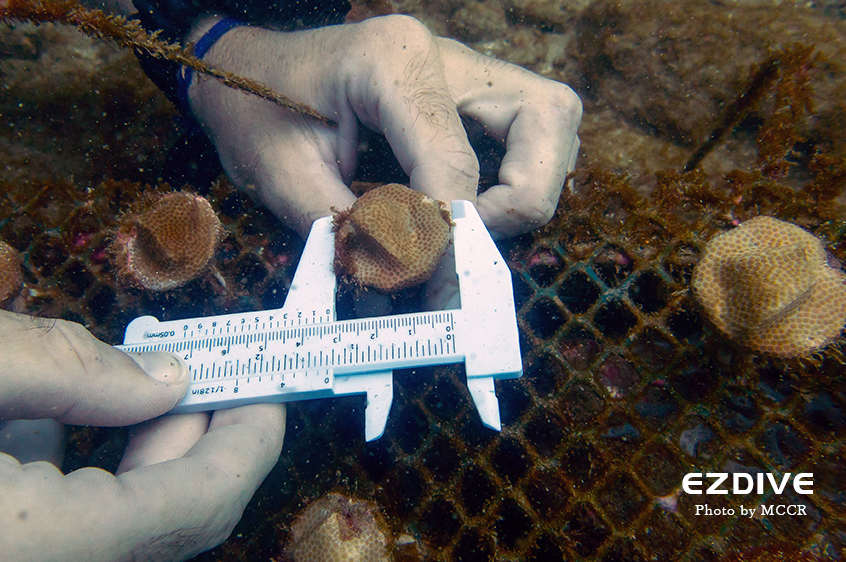
The goal is to have enough healthy fertile corals on the reef so they once again become a self-sustaining environment and can reproduce without any human influence. The idea is to allow corals more time to adapt to changing local and global conditions and increase their chances for survival. If the number of coral colonies can be reversed, the logic is that the environment as a whole can be destabilized. This is the vision for a better ocean, this is a day in the life of MCCR. In just three years of operation, the coral restoration project has built 35 nurseries with over 700 coral fragments, plus 1,000 new coral colonies have been transplanted to the reefs.
Over the years, Kat and Georgia have designed PADI-certified courses that emphasize sustainable dive practices and offer courses such as reef restoration, coral internships and marine education. People from across the globe can learn about coral farming as well as sustainable diving practices through MCCR’s platform. The coral restoration internship offers a month-long programme on coral remediation work. Students learn how to identify different species of endemic coral and determine the health of a colony in the classroom. The lessons then move to the ocean and volunteers take part in all aspects of restoration, recording data, stocking, maintaining a healthy coral nursery and outplanting. The coral restoration project encourages people from all over the world to get their hands wet and help restore Manuel Antonio’s natural aquatic ecosystem starting with the coral reefs. Over the years MCCR has welcomed over 100 volunteers and interns and has a scholarship program for local marine biology students.
MCCR emphasizes the interconnectedness of our species to our natural environment by encouraging everyone to make lifestyle changes that support a sustainable future. Even if we live in land-locked countries, we can still affect aquatic ecosystems. Through MCCR’s adopt-a-coral program people from across the world can virtually foster a coral fragment while simultaneously supporting the work the non-profit does. Additional steps that MCCR encourages all of us to take include: reducing our carbon footprint, making sustainable seafood choices, buying reef-friendly and eco-friendly products and lowering the amount of trash sent to landfill. With these seemingly small choices, we are all making small steps toward a healthy, co-balanced relationship with our only planet. Though there is much work to be done, if there is anything to be learned from corals it is that persistence and resilience will win out over time. Together we can improve our oceans, one coral fragment at a time.
Find out more about Marine Conservation Costa Rica at www.marineconservationcostarica.org

